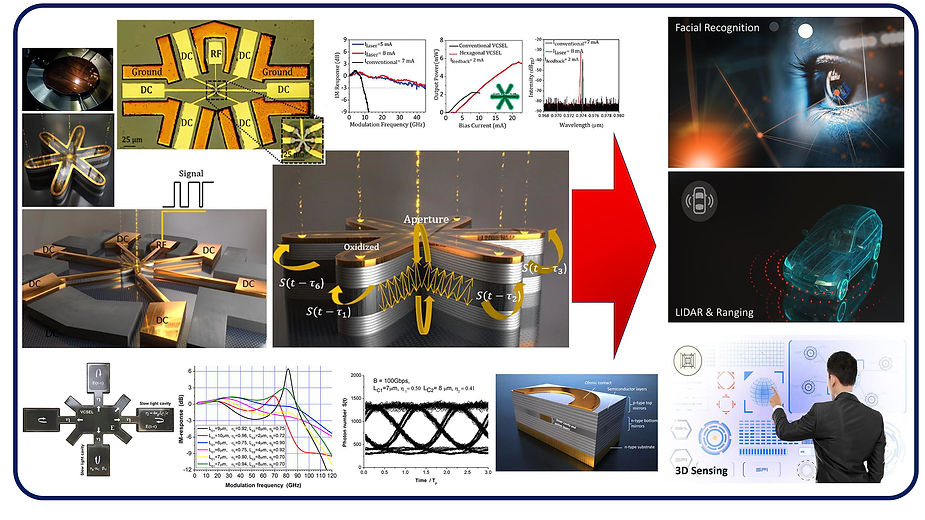
Vertical Cavity Surface Emitting Lasers (VCSELs) are playing an increasingly important role in LiDAR systems, with applications ranging from self-driving cars to consumer electronics. Their value comes from several practical advantages. VCSELs emit a round, symmetric beam that simplifies optical alignment and improves measurement accuracy. They can be arranged into arrays, which makes it possible to generate detailed, high-resolution images and cover a wide field of view. VCSELs are also robust, maintaining stable performance under temperature variations, and they support very fast modulation speeds. On the manufacturing side, they are cost-effective since entire wafers can be tested in parallel. Operating in the near-infrared range, they are generally eye-safe, which is an important consideration for use in everyday devices.
In our work to extend the modulation bandwidth (MBW) of VCSELs, we introduced designs that incorporate multiple transverse-coupled cavities (TCCs) around the central laser. These structures enhance optical feedback, and in hexagonal cavity configurations, MBWs potentially is approaching 150 GHz. The coupled-cavity geometry produces a slow-light effect, allowing large phase shifts in a compact device.
Recently, we developed a transverse cavity surface-emitting laser (TCSEL) architecture to overcome the limited wavelength tunability of conventional VCSELs. Using a bowtie-shaped transversely coupled cavity operating at 980 nm, we demonstrated robust wavelength tuning of ~5 nm by controlling injection current in one cavity and applying a negative bias in the other. This coupled-cavity design provides a compact and efficient approach to tunable lasers, advancing VCSEL/TCSEL technology for applications in optical communication and sensing.
For more information, visit this work as full article in following link: Tunable Laser Using Transverse Cavity Surface Emitting Laser Working near Exceptional Point | ACS Photonics.
